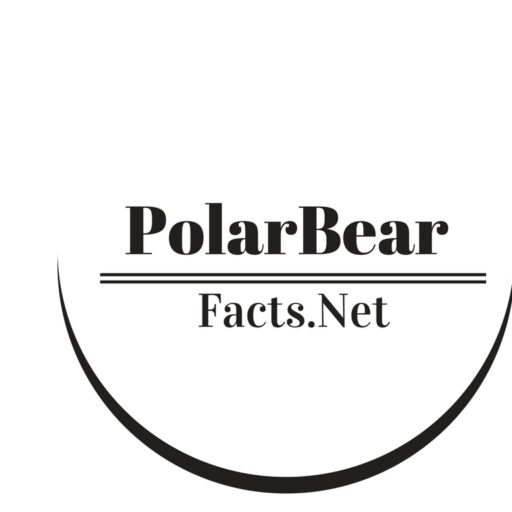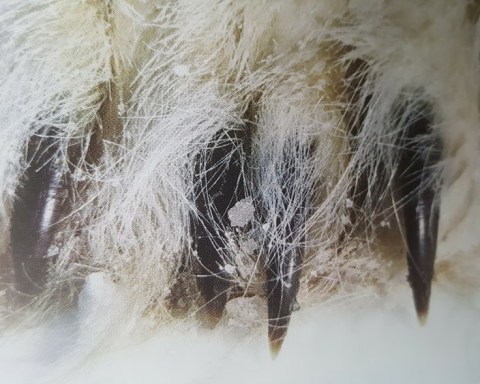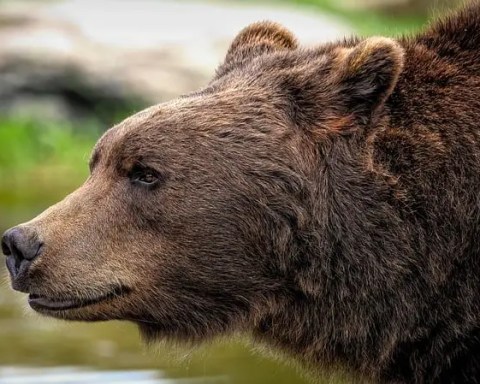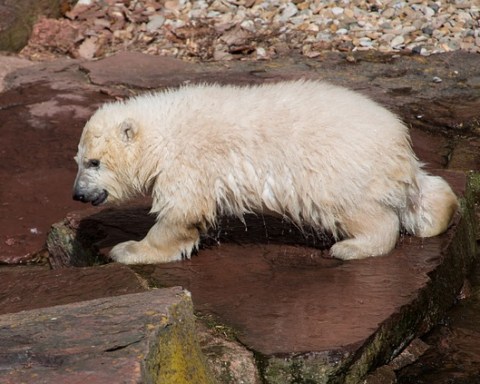The polar bear (Ursus maritimus) doesn’t seem to have any special anatomical adaptations despite the fact that it is the only bear species that spends almost the entire life in water. The large body size of a bear prevents the heat loss—thereby making it warm even in frigid arctic weather.
Polar Bear Anatomy
- Musculo-Skeletal System
- Reproductive System
- Gastro-intestinal System
- Circulatory System
- Urinary System
- Respiratory System
Polar Bear Musculo-Skeletal System
According to The American Society of Mammalogists the polar bear’s neck muscles are extremely strong and powerfully developed. This can be evident from the fact that ice bears can easily pull a 600-pound seal with their neck. Apart from neck muscles the hind limbs are also thought to develop perfectly not only to support the weight (when the bear stands on its hind feet only) but also for gripping on the sea ice.
Polar Bear Reproductive System
Male Polar Bears
Main Article: Male Polar Bear
The study of the American Society of Mammalogists showed that the wild specimen appear to have testes of varied sizes. Polar bear’s testes are of different sizes in different seasons. For instance in May the testes grow up to 39.4 +/- 3.5 cm² whereas in late October the size measured at 27.3 +/- 2.0 cm². The small glandular ampullae lie at the distal ends of vasa deferentia. Polar bears have small prostate gland.
Female Polar Bears
Main Article: Female Polar Bear
How Many Nipples Do Polar Bears have?
The female polar bear possesses four teats or nipples all of which are functional. Four teats make up two pairs; the front pair (anterior) is only moderately posterior to the axillae and measures around 4 cm from the midline on both sides. The other two teats measure up to 15 cm further posterior. The front pair of nipples lies very close to the front legs (only just behind) whereas the second pair lies further to the back.
Functional Mammae
There are typically four functional mammae in other bear species but in female polar bear there can be four or five functional mammae. The one extra gland is situated at the posterior of the usual glands. The gland measures 4 cm from the middle on the back abdomen.
One of the females found by the Society seems to possess two extra teats measuring 15 cm anterior to the vaginal orifice. These two extra nipples are found in inguinal region. Scientists found that none of the two nipples had milk; both were non-functional. The female also possesses os clitoris.
Read More: Polar Bear Penis
Polar Bear Gastro-Intestinal System
The gastrointestinal system of polar bears behaves quite differently in summer and winter. The system is directly associated with the feeding habits which is why it responds almost immediately to the polar bear’s type of food. When polar bears eat a lot of sea blubber (mostly they do) they appear to discharge dark jellylike faeces in a liquid form. This is mainly because the seal blubber is low in fibre.
Studies further suggest that there is a significant change in the gut transit time. When an ice bear consumes seal muscle the timing is 13.8 +/- 5.4 hours and when she eats sea blubber the gut timing is 38.0 +/- 8.0 hours. Similarly if a bear feeds on fish the timing is 12.3 +/- 1.9 hours.
Polar Bear Faeces
Read More: Do Polar Bears Poop in the Woods?
The polar bear faeces are more large rounded in shape and appear like a small cylinder. The color of the faeces is dark black or brown. The captive bear drops faeces after every 17 – 22 hours especially when it is fed with ringed seal carcass. However when a bear only eats blubber then the transit time increases and it reaches up to 36 hours. The fish-eating polar bear in captivity is likely to discharge faeces in 14 hours.
Polar Bear Circulatory System (Heart Beat Rate)
The average heart beat rate in adult polar bears is 60 to 90 bpm however in cubs the rate reaches high up to 130 beats per minute. The high bpm in cubs is mainly because of their activity level. When the bear relaxes the pulse rate is 45 – 60 bpm. Similarly when the polar bear is asleep the heart rate gets down to 30 – 40 bpm. The pulse rate of a polar bear during running reaches up to 150 beats per minute. However the typical pulse rate in an active bear is around 130 bpm. During winter if the bear starves the rate falls down to 27 bpm.
Polar Bear Urinary System
The polar bear’s kidneys appear to be lobulated in shape. Unlike kidneys of any other carnivore the ice bear kidneys seem to have as many as 65 lobules. This is the greatest number of lobules in any carnivorous mammal.
Polar Bear Respiratory System
Polar bears have a typical respiratory rate of 15 – 30 breaths per minute. However the breath rates go higher in warmer months. When the bear is asleep rates are only 5 breaths per minute. Polar bears are also seen panting and when they do the breath rates are as high as 105 – 133 every minute. Similarly when the bear charges for the prey in short bursts breaths are greater than usual.
Blubber Fat or Obesity in Polar Bears
The subcutaneous fat is the primary cause of obesity in polar bears. Adult bears have a dense layer of subcutaneous fat measuring 5 to 10 cm in thickness. Adult females in particular become obese weeks before they go into their materiality den. Females are thought to possess as much fat as containing 45% of the bear’s weight.
Polar bears have 4-cm-thick blubber layer which is covered with 2-mm-thick muscle sheets. The thickness of polar bear’s torso is about 0.5 to 3.0 mm. The muscle sheets are likely to be based on the broadest muscle of the back latissimus dorsi.
Read More: Polar Bear Metabolism
The supply of blood is sufficed to entertain the entire sheets of muscles. Numerous veins and arteries run from the body musculature via intramuscular blubber layer along the way to the latissimus sheets. The polar bear’s veins are 2 – 4 mm in diameter. The gap between the veins measures around 3 – 5 cm. The veins erupt from the dorsal edge of the bear’s muscle and enter the body core.
The polar bear’s limbs seem to have rich supply of blood with blood vessels go side by side—ranging from knees all the way to the ankle. The body or flesh at the top of the rear legs is known as rump. In polar bears there is a thick blubber pad that dominates the rump. The blubber pad measures about 11 mm in thickness.
Polar Bear’s Adipose Tissue
Studies further reveal that the adult polar bears’ (male and female) consist of 18.7 – 17.5% adipose fatty tissue. The content of fats is only slightly higher in captive bears as compared to the wild population. In fact the examination of few specimens reveals that the deposits of fats are almost the same in wild and captive bears. However the quantity of adipose tissue in captive polar bears is significantly greater than that of wild bears. Scientists also found that the number of adipocytes is greater than they expected.
The greater number of fatty deposits clearly reflects on the polar bear’s diet in captivity. Since the wild bears must spend days or even months in fasting the deposit of fats is relatively low. While polar bears are fairly rich in Vitamin A the level of Vitamin D3 in the bear’s blubber is estimated as 406.17 +/- 139 (mean +/- SD). The level of Vitamin D3 is quite high in fact higher than most invertebrate-eating mammals. Nonetheless, it is lower than mammals which feed on vertebrates.
